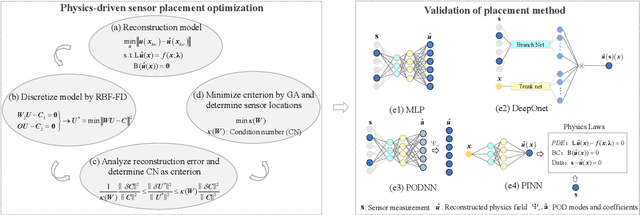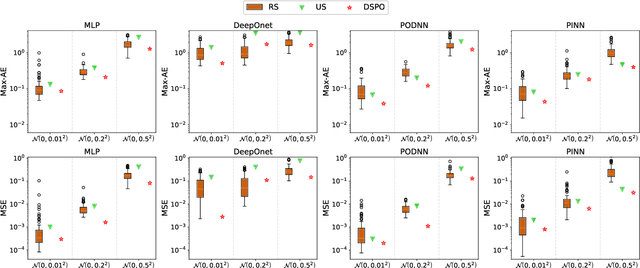Zhuojia Fu
Long-term simulation of physical and mechanical behaviors using curriculum-transfer-learning based physics-informed neural networks
Feb 11, 2025Abstract:This paper proposes a Curriculum-Transfer-Learning based physics-informed neural network (CTL-PINN) for long-term simulation of physical and mechanical behaviors. The main innovation of CTL-PINN lies in decomposing long-term problems into a sequence of short-term subproblems. Initially, the standard PINN is employed to solve the first sub-problem. As the simulation progresses, subsequent time-domain problems are addressed using a curriculum learning approach that integrates information from previous steps. Furthermore, transfer learning techniques are incorporated, allowing the model to effectively utilize prior training data and solve sequential time domain transfer problems. CTL-PINN combines the strengths of curriculum learning and transfer learning, overcoming the limitations of standard PINNs, such as local optimization issues, and addressing the inaccuracies over extended time domains encountered in CL-PINN and the low computational efficiency of TL-PINN. The efficacy and robustness of CTL-PINN are demonstrated through applications to nonlinear wave propagation, Kirchhoff plate dynamic response, and the hydrodynamic model of the Three Gorges Reservoir Area, showcasing its superior capability in addressing long-term computational challenges.
A physics-driven sensor placement optimization methodology for temperature field reconstruction
Sep 27, 2024



Abstract:Perceiving the global field from sparse sensors has been a grand challenge in the monitoring, analysis, and design of physical systems. In this context, sensor placement optimization is a crucial issue. Most existing works require large and sufficient data to construct data-based criteria, which are intractable in data-free scenarios without numerical and experimental data. To this end, we propose a novel physics-driven sensor placement optimization (PSPO) method for temperature field reconstruction using a physics-based criterion to optimize sensor locations. In our methodological framework, we firstly derive the theoretical upper and lower bounds of the reconstruction error under noise scenarios by analyzing the optimal solution, proving that error bounds correlate with the condition number determined by sensor locations. Furthermore, the condition number, as the physics-based criterion, is used to optimize sensor locations by the genetic algorithm. Finally, the best sensors are validated by reconstruction models, including non-invasive end-to-end models, non-invasive reduced-order models, and physics-informed models. Experimental results, both on a numerical and an application case, demonstrate that the PSPO method significantly outperforms random and uniform selection methods, improving the reconstruction accuracy by nearly an order of magnitude. Moreover, the PSPO method can achieve comparable reconstruction accuracy to the existing data-driven placement optimization methods.
 Add to Chrome
Add to Chrome Add to Firefox
Add to Firefox Add to Edge
Add to Edge